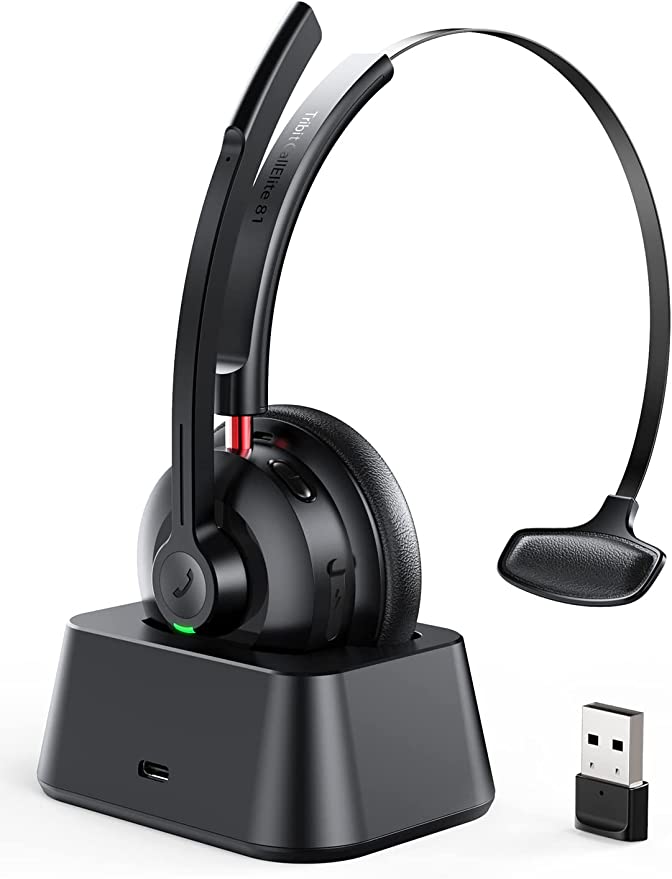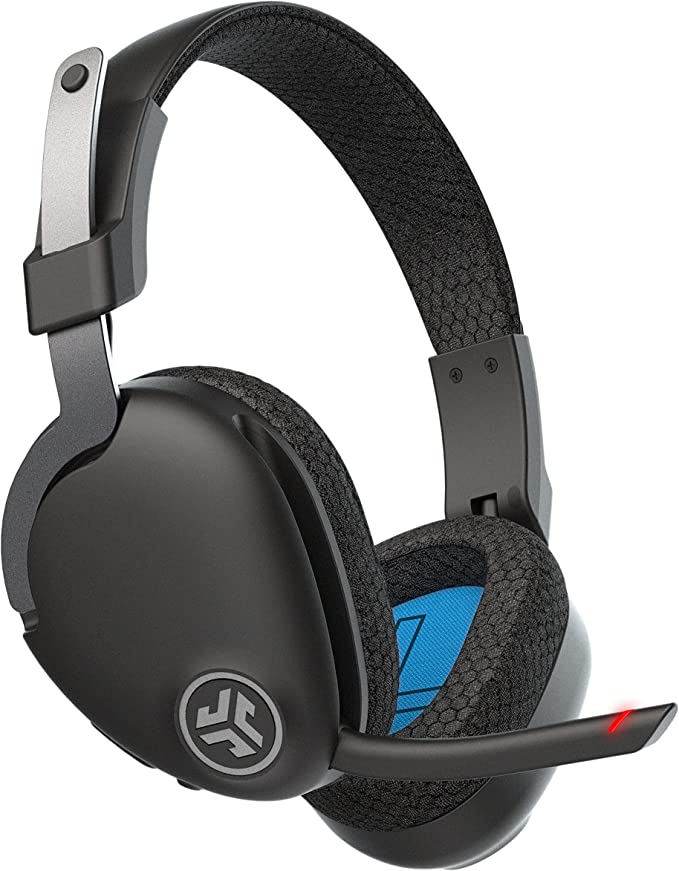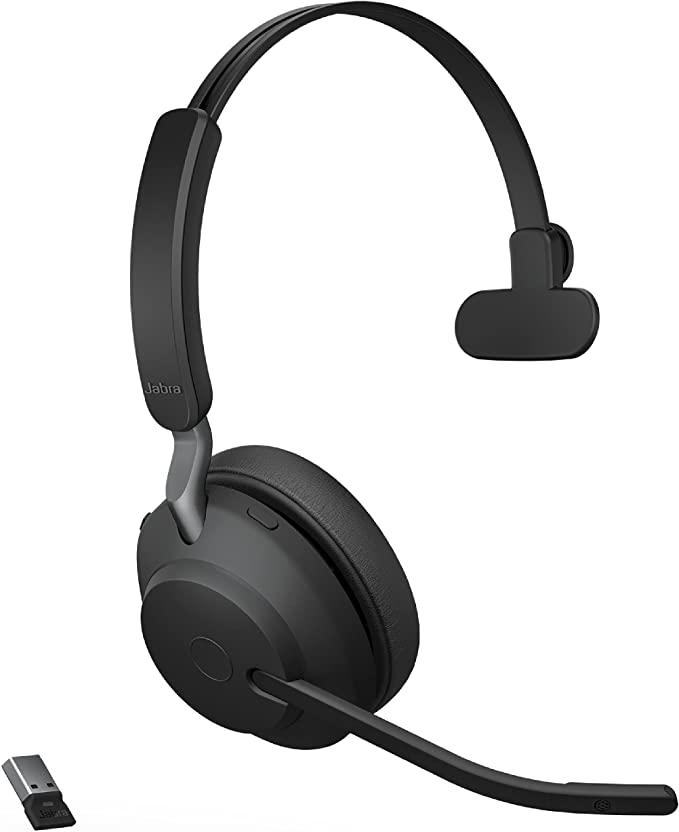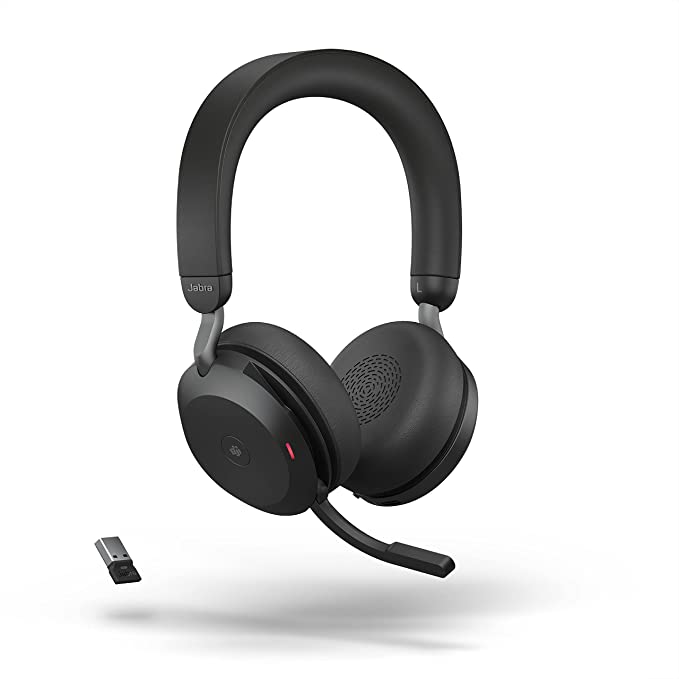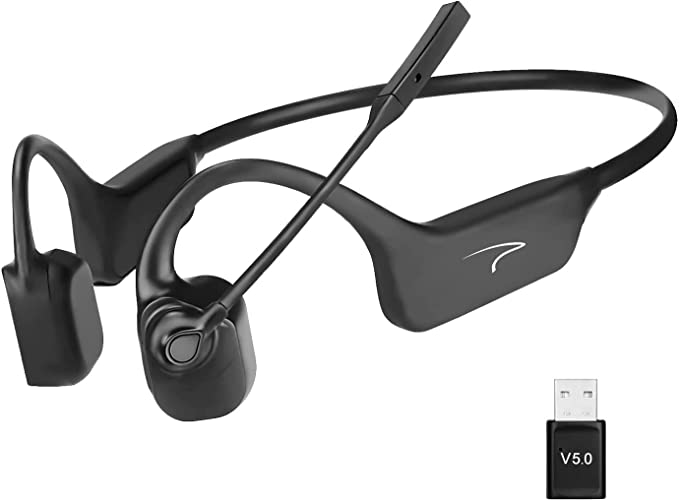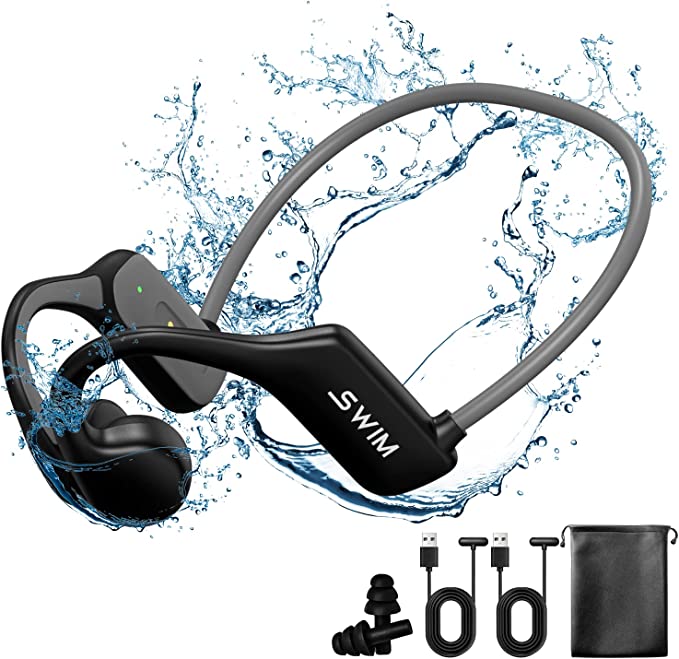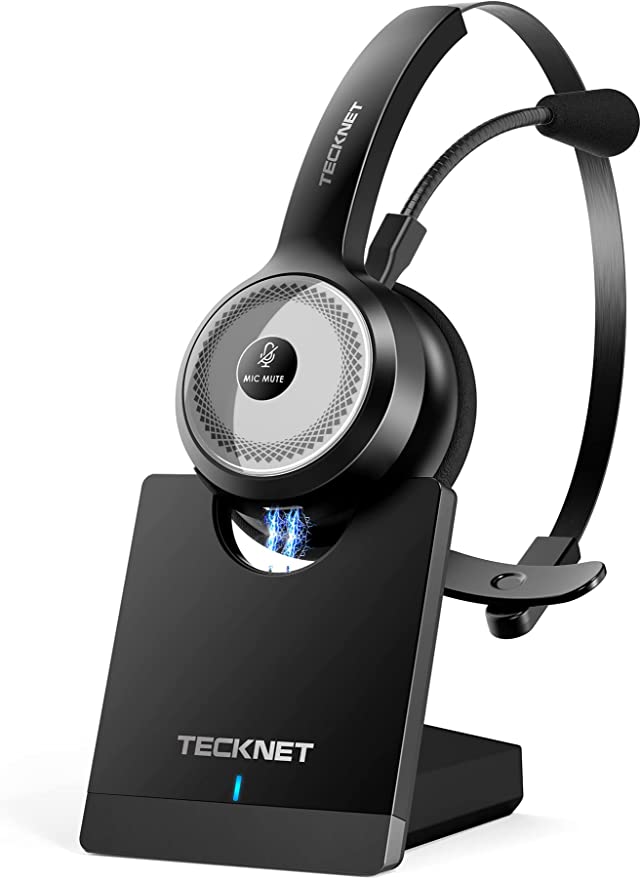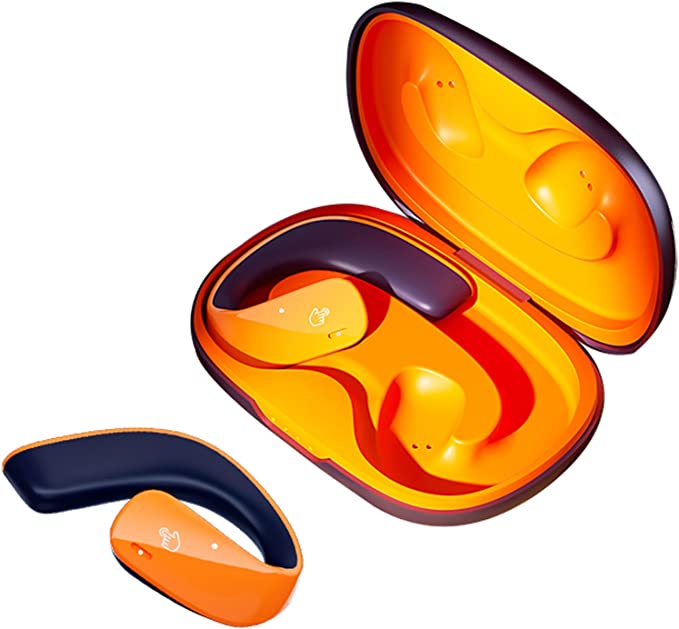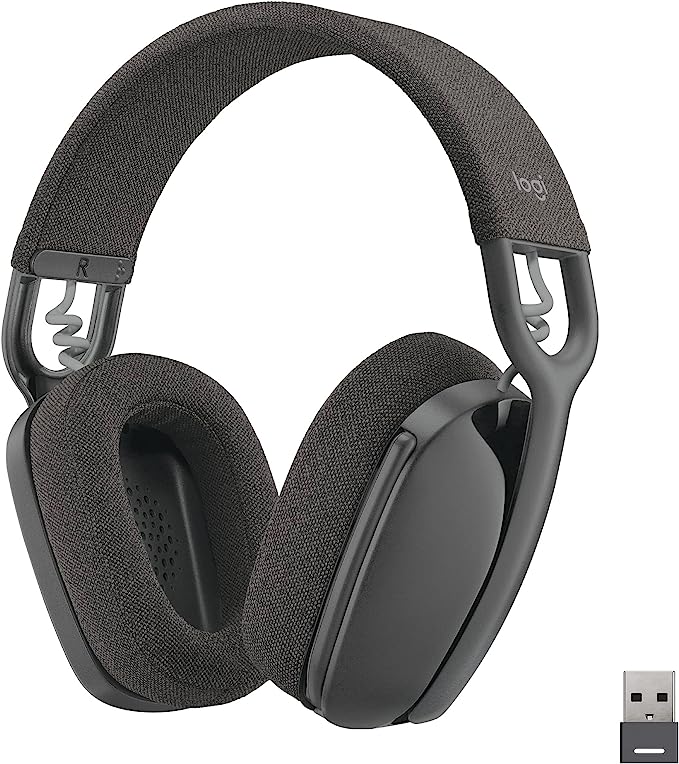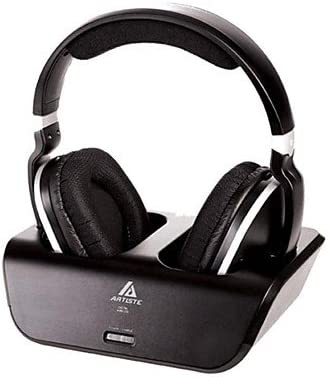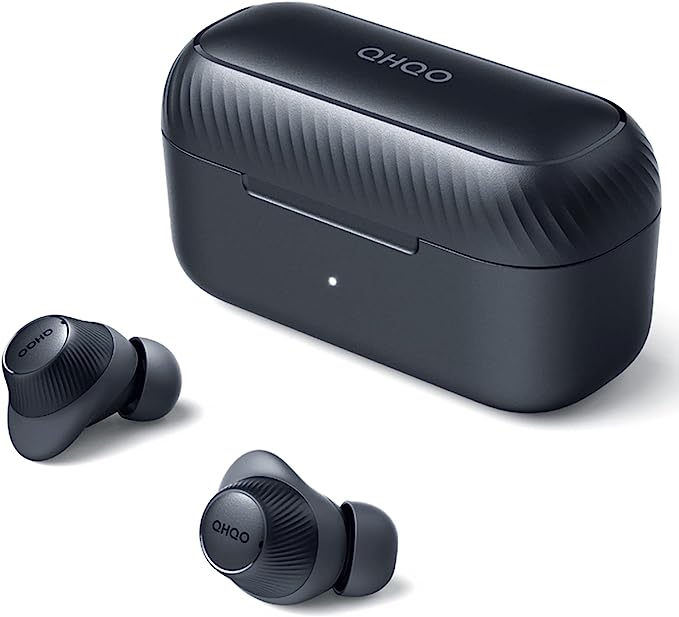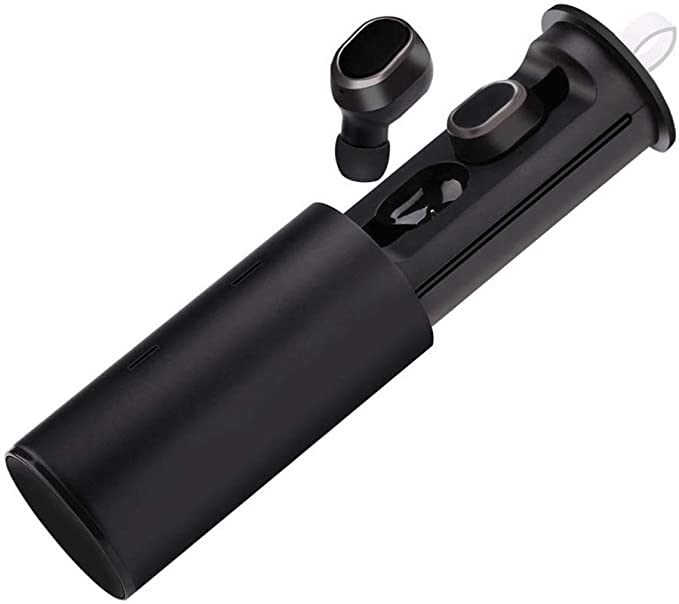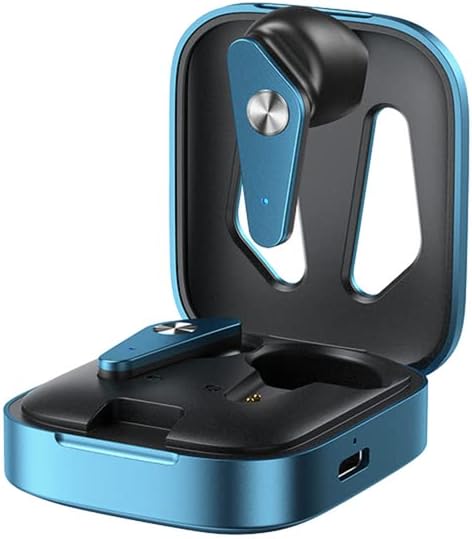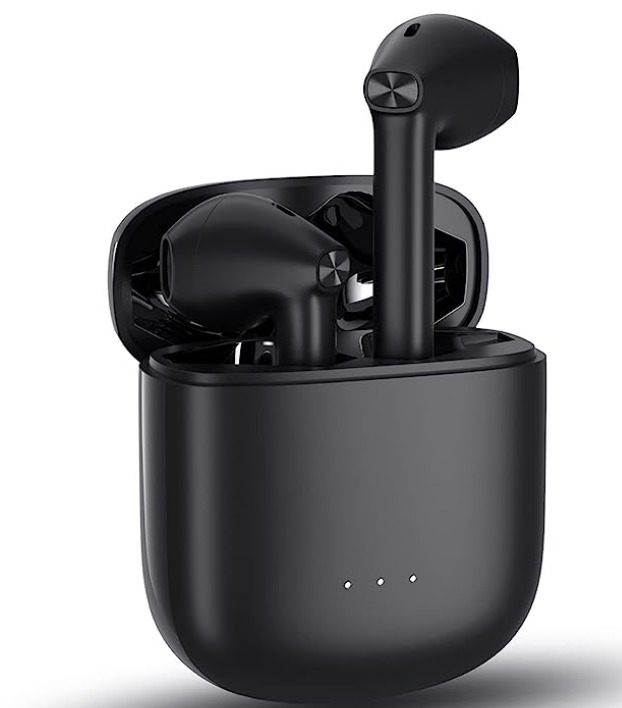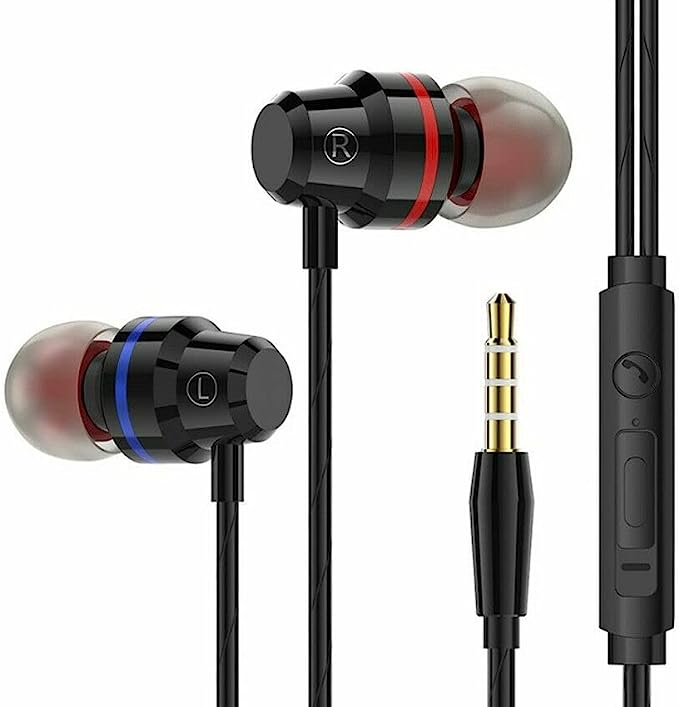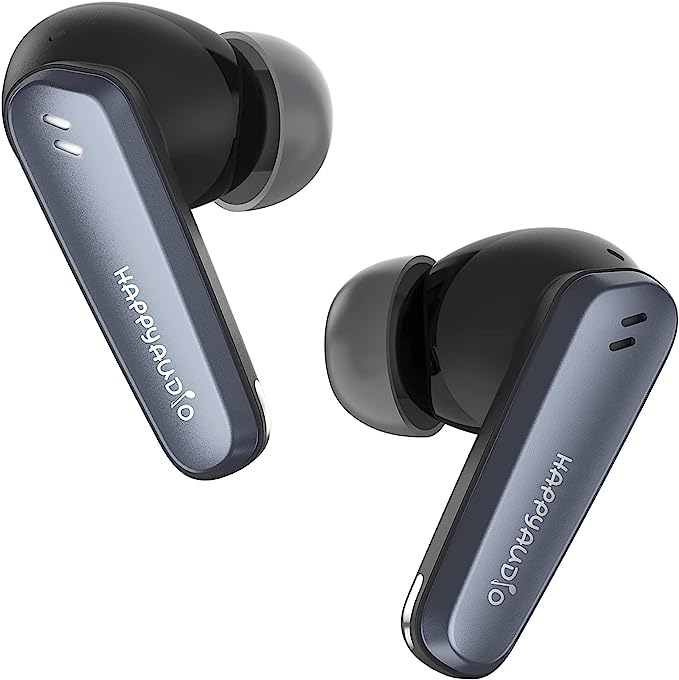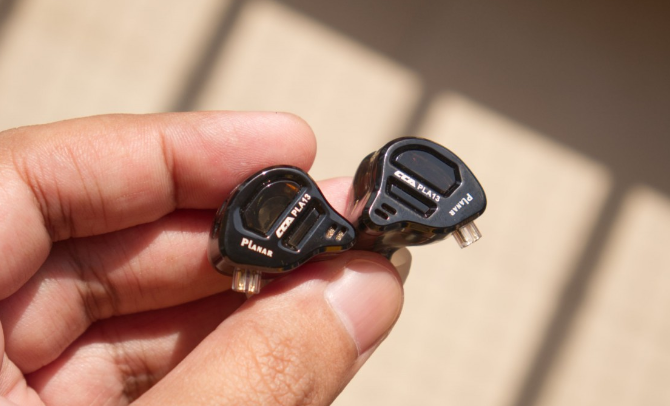EKSA H16 Headset: Unveiling the Science of Wireless Sound, AI Clarity, and All-Day Audio
Update on May 30, 2025, 3:08 p.m.
Imagine this: you’re on a crucial video call, about to close a deal, when your neighbor decides it’s the perfect time to test their new power drill. Or perhaps you’re coordinating a vital move with your teammates in an online game, but your voice is lost in a sea of keyboard clicks and fan hum. In our hyper-connected lives, the clarity and reliability of our audio can make or break important moments. The quest for pristine, uninterrupted sound amidst the cacophony of modern life is a universal one. It’s into this arena that devices like the EKSA H16 Bluetooth Headset step, promising a suite of features designed to tame the chaos and deliver clear communication and immersive listening.
But this isn’t just about one headset. It’s an opportunity to journey through the fascinating science and engineering that make such everyday gadgets possible. We’ll explore the invisible dance of radio waves that grant us wireless freedom, peek into the intelligent algorithms that help our voices cut through the noise, understand the power-saving marvels that keep us untethered for days, and appreciate the thoughtful design that allows for hours of comfortable use. So, let’s delve into the technology packed within the EKSA H16, not just to see what it offers, but to understand how it works and what that truly means for our daily audio experiences.

The Two Lanes of Wireless Freedom – Navigating Bluetooth and 2.4G
Wireless technology has fundamentally changed how we interact with our devices, and audio is no exception. The EKSA H16 offers two distinct avenues for this untethered experience: the familiar convenience of Bluetooth and the dedicated speed of a 2.4G USB dongle. Each has its own scientific underpinnings and ideal use cases.
The Familiar Friend: Bluetooth’s Everyday Convenience
Bluetooth has become almost synonymous with wireless audio, a steadfast companion for our smartphones, tablets, and laptops. Its magic lies in the use of short-range radio waves, primarily operating within the 2.4 GHz Industrial, Scientific, and Medical (ISM) radio band. This is a busy neighborhood, as these are the same airwaves often shared by your Wi-Fi router and even your microwave oven. However, Bluetooth employs clever communication protocols, like frequency hopping, to navigate this bustling environment and establish a reliable personal area network (PAN) with your chosen device. The Bluetooth Special Interest Group (SIG) oversees the standards for this technology, ensuring interoperability between countless devices worldwide.
For the EKSA H16, its Bluetooth capability, potentially utilizing a version like 5.0 as suggested in earlier analyses, makes it an incredibly versatile tool. It’s perfect for those quick connections to your laptop for an impromptu Zoom meeting, streaming your favorite playlist from your phone while you work, or taking calls on the move. Newer Bluetooth versions generally aim to enhance performance aspects such as connection stability, range, and power efficiency, though the specific benefits always depend on the interplay between the headset and the connected device.
The Express Lane: The 2.4G Dongle’s Low-Latency Edge
While Bluetooth is the jack-of-all-trades, sometimes you need a specialist. That’s where the EKSA H16’s included 2.4G USB dongle comes into play. Think of this as a dedicated, private bridge for your audio data, directly connecting your headset to your PC or console. It also operates in the 2.4 GHz band but typically uses a proprietary or optimized protocol that differs from standard Bluetooth audio profiles.
The most significant advantage here is often a reduction in latency. Latency, in simple terms, is the tiny, sometimes imperceptible, delay between when an audio event is initiated (like a character speaking in a game or a note being played) and when you actually hear it through your headset. For everyday music listening, a little latency might not be an issue. But for fast-paced gaming, where spotting an opponent fractions of a second earlier can mean victory, or for professional video conferencing, where perfectly synchronized audio and video are crucial for clear communication, minimizing latency is paramount. The direct, often more stable, connection offered by a 2.4G dongle can significantly reduce this delay compared to many standard Bluetooth connections, offering a more immediate and synchronized experience. This is why it’s a favored feature for gaming headsets and for scenarios demanding real-time audio precision. The small trade-off is occupying a USB port, but for many, the performance gain is well worth it.

The Cone of Silence – How AI Gives Your Microphone Super Hearing
In an age of remote work and online collaboration, being heard clearly is just as important as hearing well. The EKSA H16 boasts an “AI-Powered Environmental Noise Cancelling (ENC) Microphone,” a feature designed to ensure your voice, and only your voice, takes center stage. But how does it differentiate you from the barking dog, the rumbling traffic, or the café chatter?
The Challenge: Your Voice vs. The World
First, let’s understand the problem. A microphone is an impartial listener; it captures all sound waves that reach it – your carefully chosen words, the rhythmic clatter of your mechanical keyboard, the whir of your computer fan, and any other ambient sounds. For the person on the other end of your call, this jumble of sounds can be distracting at best, and utterly incomprehensible at worst. Environmental Noise Cancellation (ENC) for microphones specifically tackles this issue. Its goal is not to make your listening experience quieter (that’s the job of Active Noise Cancellation, or ANC, in headphones for the wearer), but to clean up the audio signal you send out, making your voice crystal clear to others.
Enter the AI Maestro: Conducting a Symphony of Silence (for others)
Traditional ENC systems might employ multiple microphones to try and differentiate your voice (coming from a close, specific direction) from ambient noise (coming from all around), or use fixed filters to cut out predictable sounds. The “AI-Powered” aspect in the EKSA H16 suggests a more sophisticated and adaptive approach. Imagine an artificial intelligence that has been trained by listening to thousands of hours of human speech in myriad languages and accents, and just as many hours of diverse, annoying noises – from a baby crying to a blender whirring. Through this extensive training, often utilizing deep learning neural networks (a core concept in modern AI), the system learns to distinguish the complex patterns of the human voice from the patterns of unwanted sounds.
When you speak into the H16’s microphone, this AI algorithm acts like a highly skilled audio engineer, instantly analyzing the incoming sound. It intelligently identifies and suppresses the cacophony of background noise while preserving the nuances of your voice. This isn’t just a simple volume gate; it’s an advanced form of digital signal processing. The “AI” component allows the system to potentially be more effective than static filters, adapting in real-time to new or unexpected noises, leading to a cleaner, more professional-sounding output.
The value of this is immense. For the remote worker, it means a more professional presence, even if the home office is a corner of a busy kitchen. For gamers, it ensures teammates hear crucial callouts, not button mashing. For anyone making important calls from a less-than-ideal location, it reduces the listener’s cognitive load, as they don’t have to strain to decipher your words.
While the promise of AI-driven clarity is powerful, real-world microphone performance can be a nuanced affair. The effectiveness of any ENC, AI-driven or otherwise, often hinges on the quality of the algorithms, the microphone hardware itself, and the specific acoustic environment. For instance, some users (drawing from German customer feedback on the H16) have found their microphone experiences vary, with one user noting their previous setup was perceived as clearer by colleagues. This highlights that factors like the type of background noise (sudden sharp noises can be harder to filter than constant hums), internet bandwidth affecting transmitted audio quality, and even the listener’s audio playback equipment can all play a role. Effective AI ENC is a continuous dance between sophisticated algorithms and the diverse, often unpredictable, conditions of the real world.
The Marathon Runner – The Science Behind 55 Hours of Playtime
In our always-on, wireless world, battery life is king. There’s a unique kind of freedom that comes from knowing your headset won’t die ميد-important meeting or during the final boss battle. The EKSA H16’s advertised “55H Playtime” is a bold claim, promising days, not just hours, of continuous use on a single charge.
Beyond Convenience: The Freedom of Extended Battery Life
Fifty-five hours is a significant figure. To put it in perspective, that’s potentially more than a full 40-hour work week plus overtime, or enough to cover a flight from London to Perth and almost all the way back, without reaching for a charging cable. This marathon-like endurance translates directly to user convenience: fewer charging cycles mean less wear on the battery over time, less clutter from constantly plugged-in cables, and the peace of mind that your headset is ready when you are, whether for an impromptu call or an extended entertainment session.
The Unseen Engine: What Powers Such Endurance? (General Principles)
Achieving such impressive playtime in a wireless device isn’t magic; it’s a careful symphony of several technological advancements, generally speaking:
-
Efficient Battery Chemistry: The heart of any wireless device is its battery. Most modern headsets, likely including the H16, utilize Lithium-ion (Li-ion) or Lithium-polymer (Li-poly) batteries. These are marvels of electrochemistry, packing a high energy density – meaning more power stored in a smaller, lighter package. Their fundamental operation, as defined by materials science and chemistry, involves the movement of lithium ions between an anode and a cathode through an electrolyte during charge and discharge cycles.
-
Low-Power Components: Every component in the headset, from the Bluetooth System-on-Chip (SoC) that handles wireless communication and audio processing, to the tiny microcontrollers (MCUs) managing other functions, is designed with power efficiency in mind. Semiconductor manufacturers are constantly pushing the boundaries to create chips that deliver high performance with minimal energy draw. This is a core principle in modern electronics design.
-
Intelligent Power Management: Sophisticated software and dedicated Power Management Integrated Circuits (PMICs) play a crucial role. These systems intelligently manage how power is distributed and consumed. For example, the headset might enter a low-power standby mode when no audio is playing, or specific an_unused features might be temporarily powered down to conserve energy. This dynamic control is vital for maximizing every milliampere-hour from the battery.
While the exact internal specifications of the H16’s battery and power management system aren’t detailed in the provided information, its claim of 55 hours of playtime suggests a well-optimized balance of these factors – a suitably sized battery paired with components and software that sip, rather than gulp, power.
The Comfort Cocoon – Ergonomics and the Over-Ear Embrace
For a device that might be worn for hours on end, whether for work or play, comfort is not a luxury – it’s a necessity. The EKSA H16 is described primarily as an “Over-Ear” headset, a design choice rooted in ergonomic principles aimed at maximizing comfort during extended use.
More Than Just Size: The Purpose of Over-Ear Design
The term “over-ear,” or circumaural, means the earcups are large enough to completely encircle your ears, resting on the head around the ear rather than directly on the ear cartilage itself (as with “on-ear” or supra-aural designs). This seemingly simple difference has significant ergonomic implications, a field of study focused on designing equipment to fit the human body and its cognitive abilities.
One key benefit is pressure distribution. By spreading the clamping force of the headband and the weight of the earcups over a larger surface area of the skull, over-ear designs generally minimize pressure points. This can drastically reduce the likelihood of discomfort or pain, often referred to as “ear fatigue,” during prolonged listening sessions – a principle well-understood in ergonomic design to enhance long-term comfort.
Another inherent advantage is passive noise isolation. The seal created by the earcups around your ears acts as a physical barrier to some external ambient sound. While not as potent as active noise cancellation for the listener, this natural sound-blocking can help you focus by reducing low-level distractions, making for a more immersive audio experience without needing extra battery power for ANC.
Materials and Adjustability: The Unsung Heroes of Comfort
The comfort equation doesn’t end with earcup size. The materials used are critical. The original draft for the H16 mentioned “plush leatherette earpads.” Leatherette, a synthetic leather, is often chosen for its soft feel against the skin and its ability to form a good acoustic seal. The padding underneath, typically memory foam or a similar soft material, conforms to the unique shape around your ears, further enhancing both comfort and isolation.
An adjustable headband is another cornerstone of ergonomic headset design. It allows users to customize the fit to their specific head size and shape, ensuring the earcups are positioned correctly over the ears and that the headset’s weight is distributed evenly across the top of the head. Features like swiveling earcups also contribute by allowing the headset to better conform to the angles of the user’s head.
Comfort is, of course, a highly subjective experience. What one person finds perfectly comfortable, another might not. Factors like individual head shape, ear sensitivity, the clamping force of the headset, and even ambient room temperature (which can affect how warm your ears get under the earcups) all play a part. For example, while many find over-ear designs generally suitable for long sessions, one of the German users providing feedback on the H16 reported experiencing discomfort after several hours of use, also noting the material led to some sweating. This serves as a valuable reminder that even with thoughtful ergonomic design, individual experiences can vary, and finding the “perfect” fit often involves personal trial.
The Chameleon – Detachable Mic and Everyday Versatility
Beyond the core technologies of wireless communication, noise cancellation, and extended battery life, practical design choices significantly impact a headset’s usability. The EKSA H16’s inclusion of a detachable microphone, a feature noted in earlier analyses and common in versatile headsets, adds a valuable layer of adaptability.
The brilliance of a detachable microphone lies in its simplicity and the flexibility it affords. When clear voice communication is paramount – during a business presentation, a team strategy session in a game, or an online class – the microphone can be easily attached, positioned optimally for voice pickup. However, when the focus shifts to pure listening enjoyment, such as immersing oneself in music, catching up on a podcast, or watching a movie, the microphone can be just as easily removed.
This chameleon-like ability transforms the headset’s persona. Without the boom arm, it takes on a sleeker, less obtrusive profile, more akin to traditional headphones. This is not just an aesthetic consideration; for many, it enhances comfort and reduces any feeling of being “on duty” when simply trying to relax. It acknowledges that a single headset might be called upon for a diverse range of tasks throughout the day, and it empowers the user to quickly adapt the device to suit the immediate need. This small but significant feature underscores a design philosophy centered on user convenience and multi-scenario functionality.
The Symphony of Technologies in Your Everyday Audio
The EKSA H16 Bluetooth Headset, as we’ve explored, isn’t just a single piece of technology but rather a carefully orchestrated symphony of various scientific and engineering principles. From the invisible radio waves of Bluetooth and 2.4Ghz connections that grant us freedom of movement, to the sophisticated AI algorithms working tirelessly to isolate our voices from a noisy world, each element plays a crucial part. The marvels of modern battery chemistry and power management allow for marathon-like endurance, while the principles of ergonomics guide the design towards comfort for those long hours of use.
What the H16 and similar devices represent is a broader trend in consumer electronics: the democratization of advanced features. Technologies that were once the preserve of high-end, specialist equipment are increasingly finding their way into more accessible products. AI-driven noise cancellation, dual-mode wireless connectivity, and extensive battery life are no longer niche, but rather evolving expectations for a seamless and productive digital life.
Ultimately, understanding a little of the science behind these everyday gadgets doesn’t just satisfy curiosity; it allows us to be more informed consumers and to appreciate the intricate dance of physics, engineering, and software that works, often unseen, to enhance our daily interactions and entertainment. Whether it’s the EKSA H16 or any other piece of modern tech, there’s a world of ingenuity waiting to be discovered just beneath the surface, all aimed at making our connection to the digital world, and to each other, a little clearer, a little freer, and a little more enjoyable.
